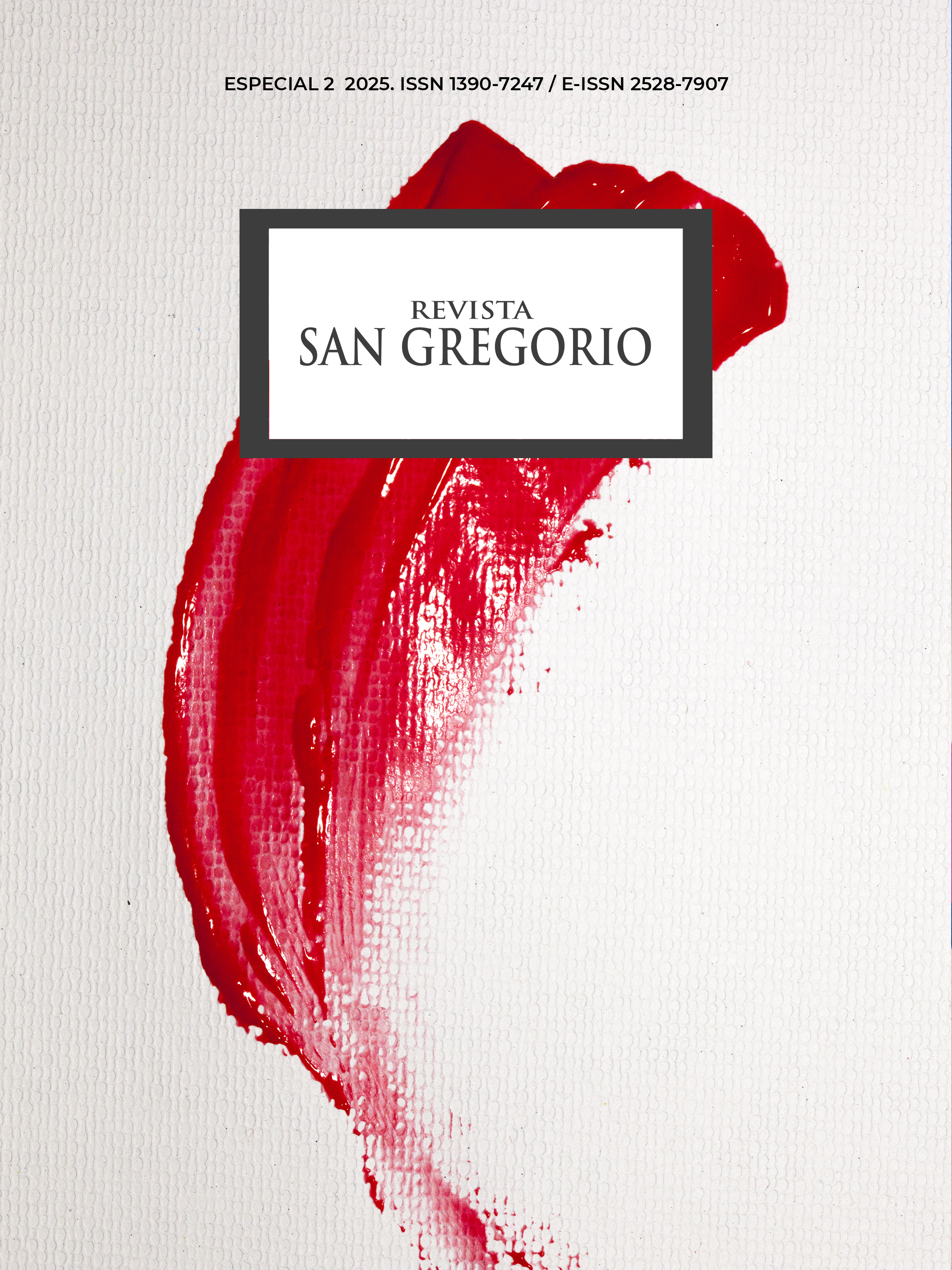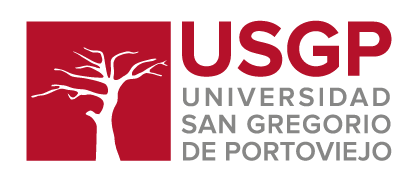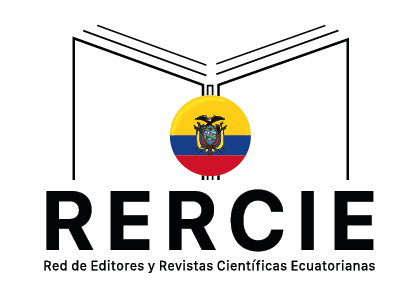Evaluation of absolute isolation in operative and aesthetic treatments applied by students
DOI:
https://doi.org/10.36097/rsan.v1iEspecial_2.3236Keywords:
Absolute isolation, dental surgery, dental restoration, dental aestheticsAbstract
Absolute isolation is a clinical procedure that creates an optimal environment for performing dental and aesthetic operative procedures, enhancing the outcomes of each intervention. Additionally, it helps preserve the properties of the materials used. The choice of both the type of isolation and the technique to be employed depends on the treatment being performed, whether it is dental operative or aesthetic. The objective of this study was to evaluate the application of absolute isolation in operative and aesthetic treatments by seventh-level students at the dental clinics of Universidad San Gregorio de Portoviejo. A descriptive cross-sectional study was conducted, involving on-site visits to dental operative clinics to observe how students performed the absolute isolation process prior to patient restorations. An observation guide with criteria on the procedure was utilized.The study revealed appropriate management of absolute isolation in operative treatments but identified areas for improvement, such as the limited use of complementary tools and the absence of aesthetic treatments. These findings highlight the need to diversify clinical training to include aesthetic procedures and optimize practices, thereby strengthening students' preparation for future dentistry.
Downloads
References
Alayouni, A. A., & Alharkan, H. M. (2024). Encuesta sobre aislamiento con diques de goma entre estudiantes de odontología de la Universidad Al-Qassim y cómo promover su uso. Journal of Pharmacy & Bioallied Sciences, 16(Suppl 2), S1657–S1662. https://doi.org/10.4103/jpbs.jpbs_1256_23
Barrancos Mooney, J. (2015). Operatoria dental: Integración clínica (3ª Ed.). Editorial Médica Panamericana.
Bokhari, A. M., Vinothkumar, T. S., Albar, N., Basheer, S. N., Gnanasekaran, P. F., Khayat, W. F., Zidane, B., & Apathsakayan, R. (2024). Barreras en el comportamiento de aislamiento con diques de goma de los estudiantes de odontología durante tratamientos restaurativos adhesivos: Un estudio transversal. Cureus, 16(4), e58329. https://doi.org/10.7759/cureus.58329
Bresser, R. A., Naves, L. Z., van der Made, S. A., Cune, M. S., & Gresnigt, M. M. (2023). Deep margin elevation. International Journal of Esthetic Dentistry, 18, 142-160. https://pubmed.ncbi.nlm.nih.gov/37166769/
Gómez Díaz, M., Vargas Quiroga, E., Pattigno Forero, B., & Tirado Amador, L. (2017). Algunas consideraciones sobre el aislamiento absoluto. MEDISAN, 21(10), 3066-3076. http://scielo.sld.cu/scielo.php?script=sci_arttext&pid=S1029-30192017001000011
Gutiérrez-Pineda, J. L., Robayo-Falla, J. C., & Muñoz-Zapata, S. (2018). Use of absolute isolation with rubber dam in restorative treatments by oral rehabilitators in the department of Antioquia. CES Odontología, 31(2), 28-37. https://doi.org/10.21615/cesodon.31.2.3
Hernández, J., & Méndez, F. (2019). Absolute isolation: Analysis of paradigms and current context. Revista de Operatoria Dental y Biomateriales, 8(2), 41-46. https://www.rodyb.com/wp-content/uploads/2019/05/6-aislamiento-absoluto.pdf
Manrique-Guzmán, J. A., Manrique-Chávez, C. B., Chávez-Reátegui, B. del C., & Manrique-Chávez, J. E. (2018). Technical and perceived quality of dental operative service in a teaching dental clinic. Revista Estomatológica Herediana, 28(3), 185–194. https://doi.org/10.20453/reh.v28i3.3396
Miao, C., Yang, X., Wong, M. C. M., Zou, J., Xuedong, Z., Li, C., & Wang, Y. (2021). Aislamiento con dique de goma para tratamiento restaurador en pacientes odontológicos. Cochrane Database of Systematic Reviews, 2021(5), CD009858. https://doi.org/10.1002/14651858.CD009858.pub3
Olegario, I. C., Moro, B. L. P., Tedesco, T. K., Freitas, R. D., Pássaro, A. L., Garbim, J. R., Oliveira, R., Mendes, F. M., Grupo colaborativo CARDEC 03, & Raggio, D. P. (2022). Uso de dique de goma versus aislamiento con rollo de algodón en la supervivencia de restauraciones de resina compuesta en molares primarios: Resultados a 2 años de un ensayo clínico de no inferioridad. BMC Oral Health, 22(1), 440. https://doi.org/10.1186/s12903-022-02449-y
Petao Ortiz, S. Y. (2022). Importancia del uso de aislamiento absoluto para restauraciones adhesivas. Repositorio Institucional de la Universidad de Guayaquil. https://repositorio.ug.edu.ec/handle/redug/66699
Robinson, D. S. (2023). Modern Dental Assisting-E-Book: Modern Dental Assisting-E-Book. Elsevier Health Sciences.
Saleem, N. E., Baitalmal, A., Alsamman, R. M., & Sembawa, S. N. (2024). Actitud de los estudiantes de odontología hacia la aplicación de diques de goma: Un estudio transversal. Cureus, 16(5), e60503. https://doi.org/10.7759/cureus.60503
Sánchez Romero, M. de L., & Amado Schneider, A. R. (2020). Eficacia de los tipos de aislamiento utilizados en clínicas de Odontopediatría UCSG, semestre B-2019. Journal of American Health, 3(3), 59–69. https://doi.org/10.37958/jah.v3i3.51
Seron, M. A., Strazzi-Sahyon, H. B., Banci, H. A., Berton, S. A., Cintra, L. T. A., & Sivieri-Araujo, G. (2020). The importance of rubber dam isolation in endodontics throughout COVID-19 outbreak. Brazilian Dental Journal, 31(6), 567–573. https://doi.org/10.1590/0103-6440202003760
Viera, K. G., Cruz, V. A., & Flores, P. J. (2019). Corrección estética mediante resina compuesta, usando técnica mock up para el cierre de diastemas; Reporte de caso. Revista KIRU, 16(4). http://dx.doi.org/10.24265/kiru.2019.v16n4.08
Downloads
Published
How to Cite
Issue
Section
License
Copyright (c) 2025 Alda Noelia Alarcón Barcia

This work is licensed under a Creative Commons Attribution-NonCommercial-NoDerivatives 4.0 International License.


















